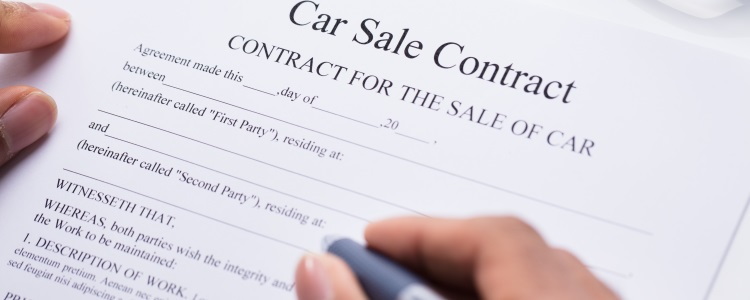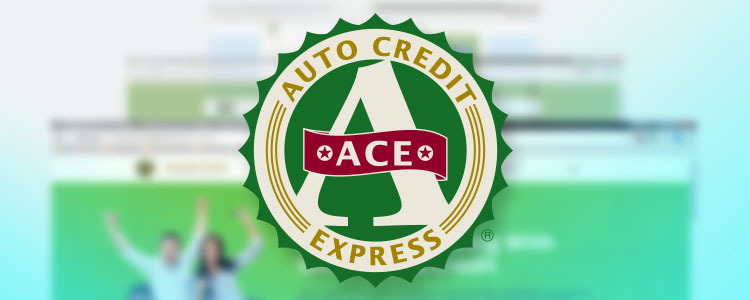Are you looking to buy a used vehicle? Well, it’s going to take some time and effort to get the best deal possible. Luckily, we compiled a detailed, step-by-step list for you to follow if you’re not sure where to start your car buying journey.
Used Car Buying Checklist: 10 Things to Do
1. Set a budget and get pre-approved
 Financing a used vehicle can be expensive. Using online tools and calculators, you can set a budget for an auto loan. Using our Car Loan Estimator, you can see just how much vehicle you could afford. You need to know how much you make a month before taxes, your credit score, and your total monthly bills. If you have good credit, it’s also time to get pre-approved for your loan. A good tip: if you have bad credit and plan on getting financing through a subprime lender, make sure you budget for a down payment of at least $1,000 or 10 percent of the car’s selling price. You can’t get pre-approved with most of these lenders, so you have to wait until you visit a dealership to get approved for financing.
Financing a used vehicle can be expensive. Using online tools and calculators, you can set a budget for an auto loan. Using our Car Loan Estimator, you can see just how much vehicle you could afford. You need to know how much you make a month before taxes, your credit score, and your total monthly bills. If you have good credit, it’s also time to get pre-approved for your loan. A good tip: if you have bad credit and plan on getting financing through a subprime lender, make sure you budget for a down payment of at least $1,000 or 10 percent of the car’s selling price. You can’t get pre-approved with most of these lenders, so you have to wait until you visit a dealership to get approved for financing.
2. Pick a car that fits your needs
What do you need out of this vehicle? Take a step back and think about what your current needs are, and how your next car can satisfy them. If you need a bigger vehicle to haul the family around, look at the cargo space and dimensions of SUVs. If you have a small family or are typically the only one in the car, consider a small crossover or sedan. Make sure you look at everything – dimensions, features, fuel economy, comfort, etc. – to get a clear idea of what the vehicle can offer.
3. Check reliability, safety, and ownership costs
Once you have a couple of cars picked out, check their reliability ratings, owner and expert reviews, safety ratings, and research the estimated total cost of ownership. Some used vehicles come with a lower price tag, but end up costing more in repairs and basic maintenance. See what other owners experienced with the same model by looking up reviews, and research any past recalls for the model you're interested in.
4. Research prices
Using sites such as CarsDirect or NADAguides, you can get an estimate on how much the vehicle should cost. Make sure you know the exact make, model, year, trim level, and any additional options you want. Since mileage and condition affect a car’s cost, if you opt to buy a vehicle that has lower mileage, it could mean paying more.
5. Check the VIN
If you find a vehicle you want , make sure you check the VIN number – especially if it's from a private party. Make sure all the information that you're given is accurate, and that the car hasn’t had its title washed, among other things. Pay for a vehicle history report if you have to. If the seller doesn’t disclose important information, such as a major repair or accident, it’s best you walk away.
6. Reach out to the seller (if private party)
Once you check the VIN and history, contact the seller and ask specific questions. Some sample questions are: are service records available? How many people have owned the car? Is there any important information not listed that I should be aware of? Don’t be afraid to get specific – you want to make sure the vehicle you plan to buy is in good shape and isn’t going to come with any unexpected issues.
7. Test drive the car
Once you get to this stage, you should test drive the vehicle and work all the controls. Make sure you walk around the car and look at every detail, and look at the condition of the exterior, as well. Check that the brakes are responsive, that the vehicle doesn’t make any funny noises when driving, and that all additional features work properly.
8. Have a mechanic look at it
If everything looks and feels good to you, the next step is to have a trusted mechanic and body specialist take a closer look at it. A mechanic can point out any hidden issues not obvious to the average car buyer. Vehicles are complicated, and it’s very easy to miss something if you don’t know the ins and outs of how they work.
9. Negotiate
After the car has been inspected and you feel confident in the process so far, the next step is to negotiate. The trick is to negotiate anything that involves a dollar amount to it. That means you should negotiate the asking price, and, if you’re buying from a dealer, any add-ons, as well as the trade-in value of your current vehicle, if you have one. Don’t try and negotiate everything all at once, take it slow and focus on one thing at a time. If you don’t, you could miss an opportunity to save money.
10. Close the deal
Finally, close the deal. The process of closing the deal depends on where and who you buy the car from. If you’re buying it from a private seller, you need to agree on a price, then visit your bank or credit union to get the check if you're financing it. Finally, have the seller sign the title over to you, then go straight to your DMV to register it in your name and buy the license plates.
If you’re buying the vehicle at a dealership, you can close the deal by paying in cash or signing a loan agreement, along with the rest of the paperwork. Because you’re about to wrap things up (the dealer takes care of the title, registration, and plates), it’s likely you're going to be paying a visit to the F&I office where the dealership is going to show you some additional products, such as fabric protection, window etching, or a service contract. Pick and choose carefully. In many cases, a service contract makes a lot of sense. However, you can save yourself hundred of dollars by applying fabric protection and etching the windows yourself, if you must have those things.
Ready to Purchase a Used Car?
It takes time to buy a car, and buying a used vehicle from a dealer works a little differently than buying from a private party. If you’re not sure about a private sale, but know you want a used car, let Auto Credit Express point you in the right direction.
We work with dealerships across the country that specialize in helping borrowers in unique credit situations get financed for new and used vehicles. Start the process by submitting our easy and secure auto loan request form right now!
















